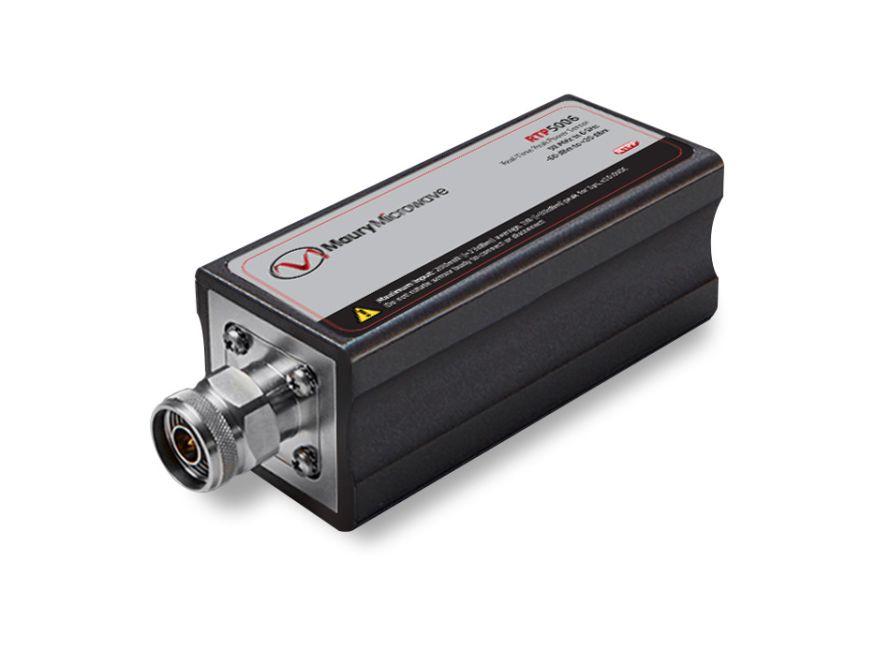USB power sensors for accurate, real-time power measurements
Maury USB power sensors combine the precision and speed of advanced RF measurement technology with the convenience of USB connectivity. These compact sensors deliver wide dynamic range, fast measurement speeds, and exceptional accuracy—whether used with a PC or paired with a bencthop power meter. From real-time peak power analysis to true average power measurements, Maury USB power sensors support a comprehensive range of test and measurement needs with reliability and ease.

We specialize in fully integrated solutions.
Power Measurement FAQs
Our RF & Microwave FAQ page addresses common questions related to the fundamentals of power measurement with direct, straightforward responses. Check out this dedicated resource for quick and convenient power measurement answers.
Why is it necessary to measure RF power of a system?
From radar to 5G communications networks, common use-cases that require measuring the RF power of a system include proof-of-design, satisfying regulatory specifications, adhering to safety limits to protect against the dangers of high-power RF radiation, system efficiency, and component protection.
How do diode detector-based RF test instruments measure RF power?
A diode-based power sensor uses high-frequency diodes to rectify the RF signal to a DC voltage signal. Proportional to the amplitude of the RF signal, this voltage is captured near the signal source. Instruments like an RF power meter can measure and scale the DC voltage to reveal desired power measurements. The relation between the DC voltage and power result depends on whether the diode operates in the square-law, transition, or linear region.
What is a peak power sensor?
Peak power sensors have a small smoothing capacitance and use a low-impedance load across the smoothing capacitors to discharge rapidly when the RF amplitude drops. This means that peak power sensors can deliver quick rise times and wide video bandwidths.
Peak power sensors have triggering capabilities, which allow them to synchronized pulse measurements. When choosing a peak power test solution, engineers should consider a sensor’s video bandwidth to accurately track a signal’s envelope power, rise time to capture a pulse’s rising edge, time resolution to verify pulse shape and timing, and crest factor/statistical measurements to assess component linearity.
What is an average power sensor?
Average power sensors operate in the square-law region where the DC voltage output is closely proportional to the square of the applied RF voltage. These sensors, therefore, deliver accurate and reliable average power measurements despite the presence of modulation.
Video bandwidth and the ability to track a signal’s profile are less of a concern when selecting an average power sensor, since these instruments are only used to measure average power over time and instantaneous envelope results are not required.
Related Resources
Latest News & Blogs
New StabilityPower High-power, Low-loss Cable Assemblies
Maury Microwave is pleased to announce the release of its StabilityPower (PW-series) high-power, low-loss microwave/RF cable assemblies optimized for EMC testing up to 6 GHz and 18 GHz. Designed to…
New uCal Universal Automated VNA Calibration Modules
Maury Microwave is pleased to announce the release of its uCal™ Universal VNA Calibration Modules, designed to automate and simplify VNA calibration for faster, more accurate, and repeatable measurements. The newly…
How Do You Measure Phase Noise at D-Band Frequencies?
As next-gen communications, radar, and sensing technologies push into D-Band, designers need advanced phase noise analysis solutions to maintain expected performance. This blog reviews common D-Band applications and how to…
What Are High-Power Microwaves and Why Do They Matter on the Battlefield?
High power microwave (HPM) technology is an effective tool to counter hostile electronic systems quickly and precisely. In this post, we’ll explore what HPM systems are, how they work, and…
How Can Engineers Validate the Power and Precision of High-Power Microwaves?
When an electronic threat is identified, high-power microwave (HPM) pulses can be used to shut down or destroy a target’s most essential systems. Achieving this level of performance requires advanced…
How Does Connector Care and Cable Phase Stability Impact Test Results?
RF and microwave connectors are essential in test setups, but simple oversights, such as using incompatible connector interfaces or careless storage, can degrade performance and cause costly equipment damage. In…
How Can Color-coded Connectors Prevent Costly Mistakes in the Lab?
RF and microwave test labs are dynamic environments with connectors everywhere. They’re found on cable assemblies, precision adapters, and attenuators, requiring the right torque wrenches to secure connections. With many…
What Is Pulse Compression Radar and What’s Needed to Test It?
From surveillance operations to mission-critical defense systems, pulsed radar is central to various applications requiring precise target information, such as range and velocity. In this blog, we’ll explore how pulsed…



